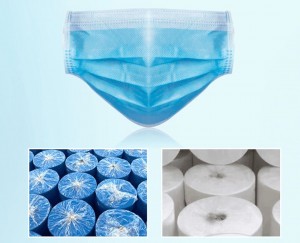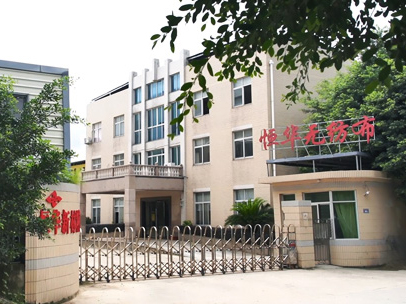Henghua is happy to share useful information to customers. This time I brings an analysis of non-woven fabric industry 2022 by an American research company.
SAN FRANCISCO, March 3, 2022 /PRNewswire/ — A new market study published by Global Industry Analysts Inc., (GIA) the premier market research company, today released its report titled “Non-Woven Fabrics – Global Market Trajectory & Analytics”. The report presents fresh perspectives on opportunities and challenges in a significantly transformed post COVID-19 marketplace.
ABSTRACT-
Global Non-Woven Fabrics Market to Reach $62 Billion by 2026
Non-woven fibers are laid in patterns and bonded using pressure, heat and chemicals. Increased demand for the fabrics in the healthcare and medical sectors constitutes the major growth promoting factor for the market. The current pandemic has increased awareness among people with regard to the many benefits of non-wovens. The market for non-woven fabrics, used in the manufacture of masks, PPE and other medical-grade products, witnessed significant growth over the past one year due to the COVID-19 pandemic. For meeting the rising demand, non-woven manufacturers across the world were seen expanding production capacities and investing money in purchasing new equipment. Disposable non-wovens are able to offer inexpensive and effective protection from microorganisms because of their multilayered construction. The geotextile industry is also one of the key end-users of non-woven fabrics. Non-woven geotextiles are used in road building and dry laid processes where they improve longevity of roads. The automotive industry also uses the fabrics for many applications. There are now many interior and exterior automotive components made of non-woven fabrics.
Amid the COVID-19 crisis, the global market for Non-Woven Fabrics estimated at US$44.6 Billion in the year 2022, is projected to reach a revised size of US$62 Billion by 2026, growing at a CAGR of 8.4% over the analysis period. Spunbond, one of the segments analyzed in the report, is projected to grow at a 8.7% CAGR to reach US$30.1 Billion by the end of the analysis period. After a thorough analysis of the business implications of the pandemic and its induced economic crisis, growth in the Dry Laid segment is readjusted to a revised 9.6% CAGR for the next 7-year period. This segment currently accounts for a 28.9% share of the global Non-Woven Fabrics market. Spunbond non-woven fabric, the largest segment, finds application in the manufacture of hygiene products and in coating substrates, building, battery separator, filtration and wipers among others. The technique of spunbond is the most used manufacturing method as it enables production of material with superior quality and greater strength.
The U.S. Market is Estimated at $8.9 Billion in 2022, While China is Forecast to Reach $14.1 Billion by 2026
The Non-Woven Fabrics market in the U.S. is estimated at US$8.9 Billion in the year 2022. The country currently accounts for a 20.31% share in the global market. China, the world’s second largest economy, is forecast to reach an estimated market size of US$14.1 Billion in the year 2026 trailing a CAGR of 10.9% through the analysis period. Among the other noteworthy geographic markets are Japan and Canada, each forecast to grow at 5.4% and 7.1% respectively over the analysis period. Within Europe, Germany is forecast to grow at approximately 5.7% CAGR while Rest of European market (as defined in the study) will reach US$15.5 Billion by the end of the analysis period. Strong growth in developing countries is being driven by increasing geriatric population and birth rate, rising awareness among people about the benefits from using the fabrics, and increasing automotive industry demand among others. Asia-Pacific (including China and Japan) is the largest non-woven fabrics market currently, driven mainly by the Indian and Chinese markets. High birthrate in both the countries, raw material availability; and strong growth of the geotextile, automotive, agricultural, medical, healthcare, construction and military sectors promotes market growth in the region.
Wet Laid Segment to Reach $9 Billion by 2026
Wet laid mat is made of heavy wet chopped denier fibers with diameter in the range of 6-20 micrometer. Wet laid mats are resin bonded with curtain coater.
In the global Wet Laid segment, USA, Canada, Japan, China and Europe will drive the 6.3% CAGR estimated for this segment. These regional markets accounting for a combined market size of US$4.2 Billion will reach a projected size of US$6.4 Billion by the close of the analysis period. China will remain among the fastest growing in this cluster of regional markets. Led by countries such as Australia, India, and South Korea, the market in Asia-Pacific is forecast to reach US$1.4 Billion by the year 2026, while Latin America will expand at a 7.8% CAGR through the analysis period.
Automotive Applications in the Spotlight
Nonwoven fabrics enjoy wider acceptance in automotive manufacturing. The growing requirement to replace plastics for achieving weight reduction and contributing to sustainability makes nonwovens a perfect option for automotive makers. Majority of companies are paying attention to make components and vehicles more efficient and lighter, and betting on nonwovens for new applications and performance attributes while lowering the use of plastics. In addition, the use of ultrasonic welding allows easy conversion of non-woven materials into automobile components. Nonwoven fabrics offer an adaptable material that is cost-effective and easy to develop and support new functionality. Nonwovens also present new design opportunities for manufacturers. Based on their superior versatility, these materials add value to numerous functions and components. The desirable variation is highly beneficial for production businesses and OEMs, mainly for diverse SKUs and products. Nonwovens are conformable to dimensional and space constraints, and allow manufacturers to explore new design options for vehicle parts and components. The demand for nonwovens in the automotive industry varies on the basis of primary focus of manufacturers across different regions. For instance, sustainability drives automakers in North America to focus on naturally-derived resins. On the other hand, European companies consider materials that can be easily repurposed at end of their life. In addition, the Asia-Pacific market is witnessing rising demand for materials that can be conveniently recycled into alternative or same products. By functionality, the market is becoming more price-sensitive to derive profit margins. While nonwovens attract few companies in North America for their aesthetic appeal, players in Asia-Pacific, most notably in India, consider nonwovens for value addition. These products are commonly used by automakers for specific benefits such as antimicrobial qualities, easy cleaning, softness and odor absorption. These benefits are prompting manufacturers to shift their attention away from expensive, complex and time-intensive plastic moulding dies and explore more nonwoven solutions.
About Henghua Nonwoven
Henghua Nonwoven is a famous manufacturer in Chinese Nonwoven Production Industry.We focus on Polypropylene Spun-Bond Fabric over 18+year. We are gald to to offer you customized nonwoven solution, and wish long term cooperation.
CONTACT:
Email: manager@henghuanonwoven.com
Tel: 0086-591-28839008
Written by:
Mason.X
Post time: Mar-10-2022










